How to use a greenhouse to grow plants, fruit and vegetables
Our guide on how to use a greenhouse will help you maximize the potential of your growing space so you can use it all year round


Learning how to use a greenhouse properly will allow you to successfully grow a variety of beautiful ornamentals, as well as fresh fruit and vegetables. Having a greenhouse expands the range of plants you can grow and creates a useful work space.
Greenhouses range from small unheated glass huts used to grow tomatoes, to the monumental Victorian glasshouses at the Royal Botanic Gardens in Kew, London, where enormous tropical plants bloom in hot humidity.
Whether you're planning to build a DIY greenhouse or you're investing in an off-the-peg design, knowing how to use a greenhouse to its full potential will expand the range of plants you’re able to cultivate and your season of growth.
It can be a nursery, used to sow and raise seedlings and plant bulbs, before they are taken outside; it might contain edible crops, such as citrus, melon, and peach, which prefer some warmth; its function could be ornamental, providing scent and color in the bleak depths of winter; or it could be a combination of all three.
Expert tips on how to use a greenhouse for growing crops and plants
All types of greenhouse can be used to grow plants that don’t cope well outdoors. Whether you have a traditional design with an aluminium or wooden frame and glass panels, or a more budget-friendly polytunnel, follow our tips on how to use a greenhouse to make sure you maximize the potential of this practical growing space.
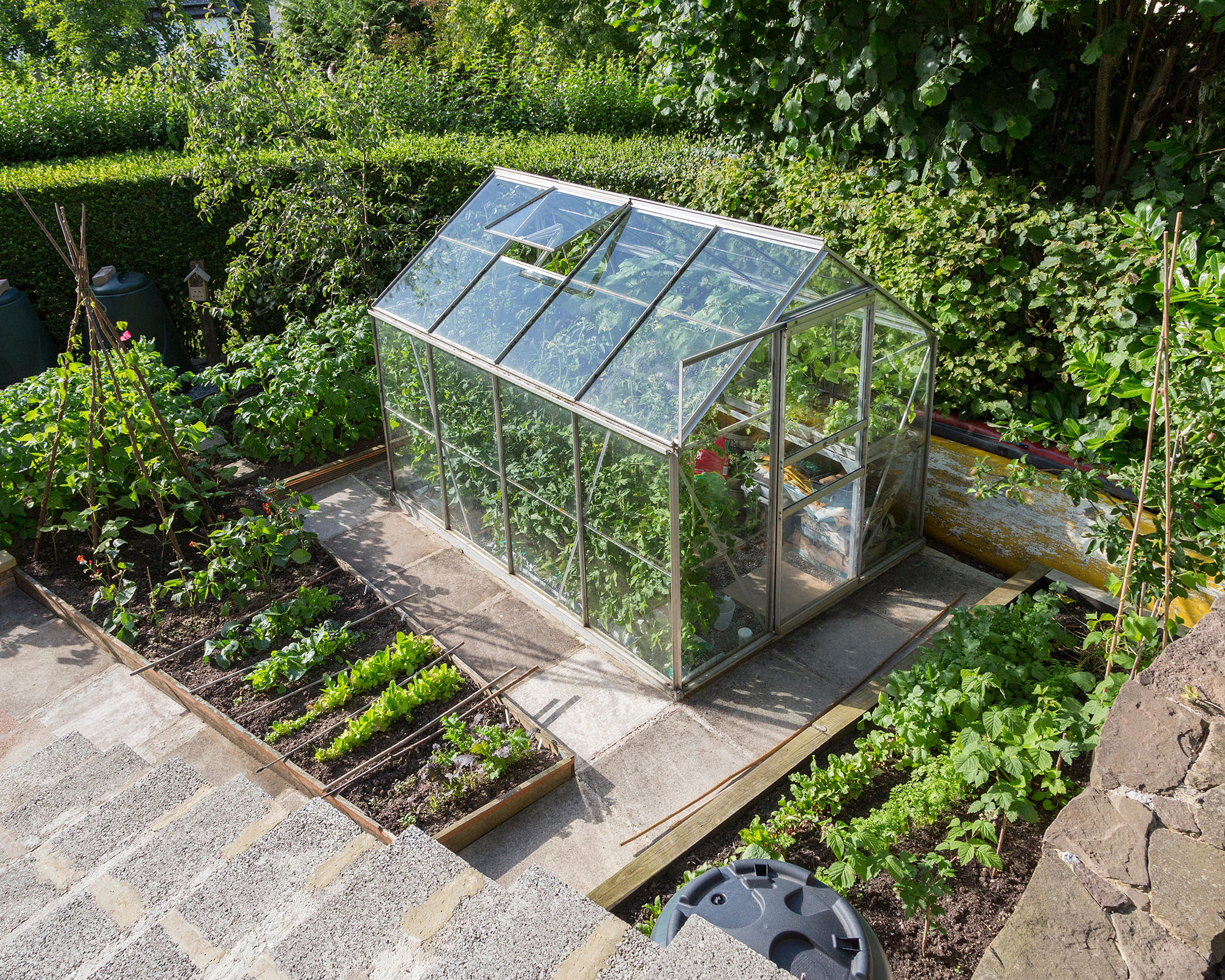
1. Use your greenhouse throughout the year
The latest greenhouse ideas will allow you to expand the range of plants you are able to grow in your garden, as well as their season of growth. You can use a greenhouse as a nursery, where plants are sown and seedlings and cuttings are raised; for example, most vegetable crops can be started much earlier under glass.
It allows you to shield tender ornamental and edible plants from wet and cold outside: either all year round or just over winter. Plus, it creates a workspace for sowing, thinning, and potting up.
Carefully planning what to plant in a greenhouse is key to making good use of your growing space all year long.
Here are some useful suggestions for how to use a greenhouse across the seasons.
How to use a greenhouse in winter
- Sow edibles (such as lettuce, aubergines, French beans, beetroot, carrots, peas, and radishes) in late winter, as well as sweet peas.
- Plant seed potatoes for harvesting new potatoes in spring and lily bulbs in pots.
- Prune grapes.
- Dig the soil of empty greenhouse borders and replenish with compost.
How to use a greenhouse in spring
- Sow a wide variety of edibles and ornamental annuals for indoor and outdoor growing: from courgettes and pumpkins to cosmos and cleome.
- Plant dahlias and cannas in pots. Take young greenhouse-raised plants outside for planting in late spring, including brassicas.
- Pollinate nectarines and peaches by hand.
- Clean the greenhouse in early spring, if you didn’t do it in fall.
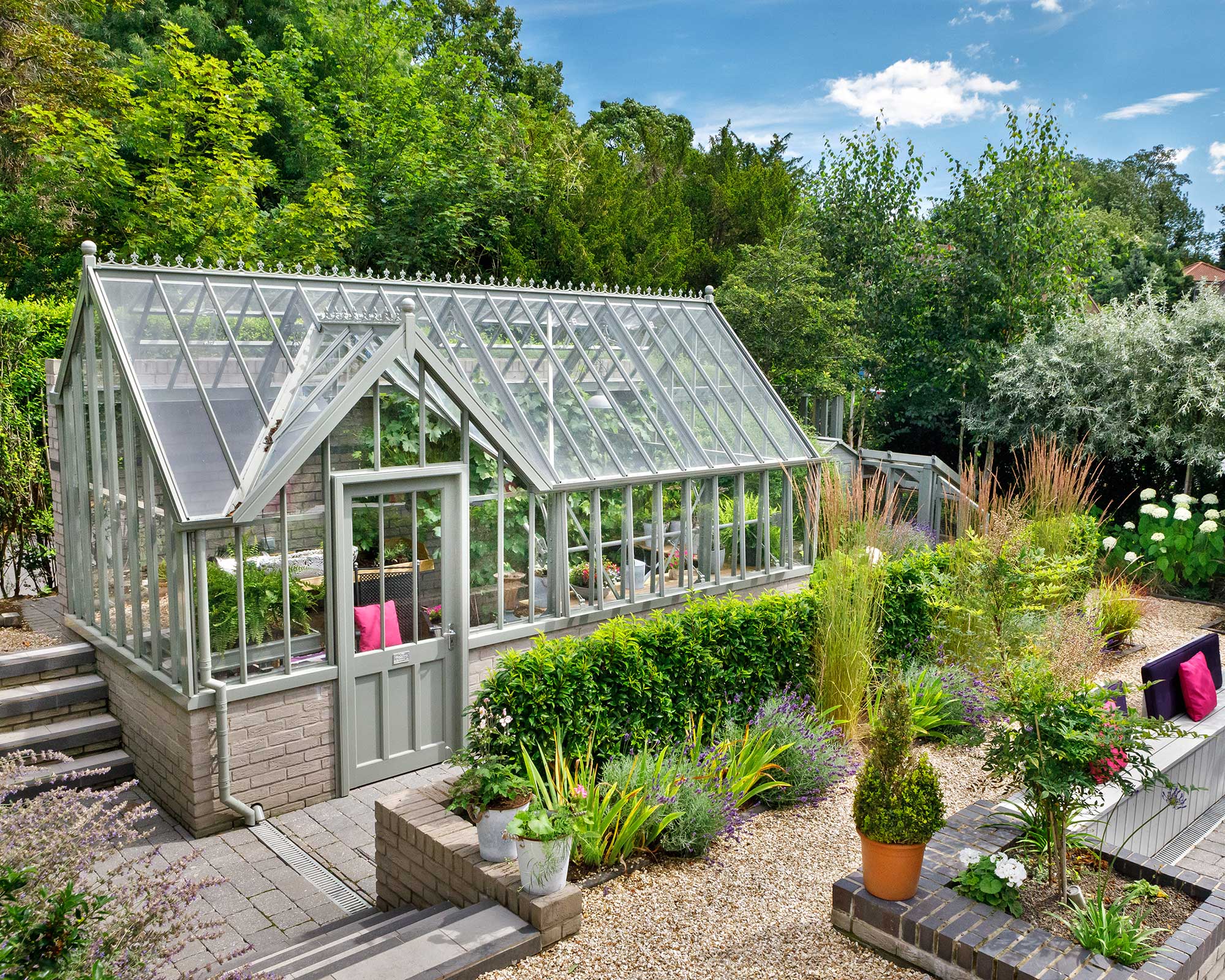
How to use a greenhouse in summer
- Sow edibles, such as calabrese, salad leaves, French beans, and parsley.
- Sow biennials, such as angelica, sweet william, and foxglove.
- Plant greenhouse-raised young plants outside.
- Prune fan-trained peaches and nectarines.
How to use a greenhouse in fall
- Sow edibles (such as carrots, salad leaves, and turnips) and hardy annuals (such as cornflowers and sweet peas).
- Plant hippeastrum (amaryllis) bulbs and spring-flowering bulbs (such as tulips).
- Tender plants should be brought into the greenhouse before the frosts.
- Insulate when the weather cools, if necessary, by attaching UV-stabilized bubble wrap to the interior walls, by rolling shade blinds down before nightfall, or by wrapping horticultural fleece around tender plants.
- Clean the greenhouse on a dry, sunny day. First, take as much as possible outside, then turn the power off and cover sockets. Wipe down the outside windows first and remove dirt between panes with a plant label, before cleaning inside. Apply wood preservative, if necessary. Remove dead leaves and slugs from pot plants, and – if need be – remove the top layer of compost and re-dress with a fresh layer, before bringing everything back into the greenhouse. Discard diseased plants.
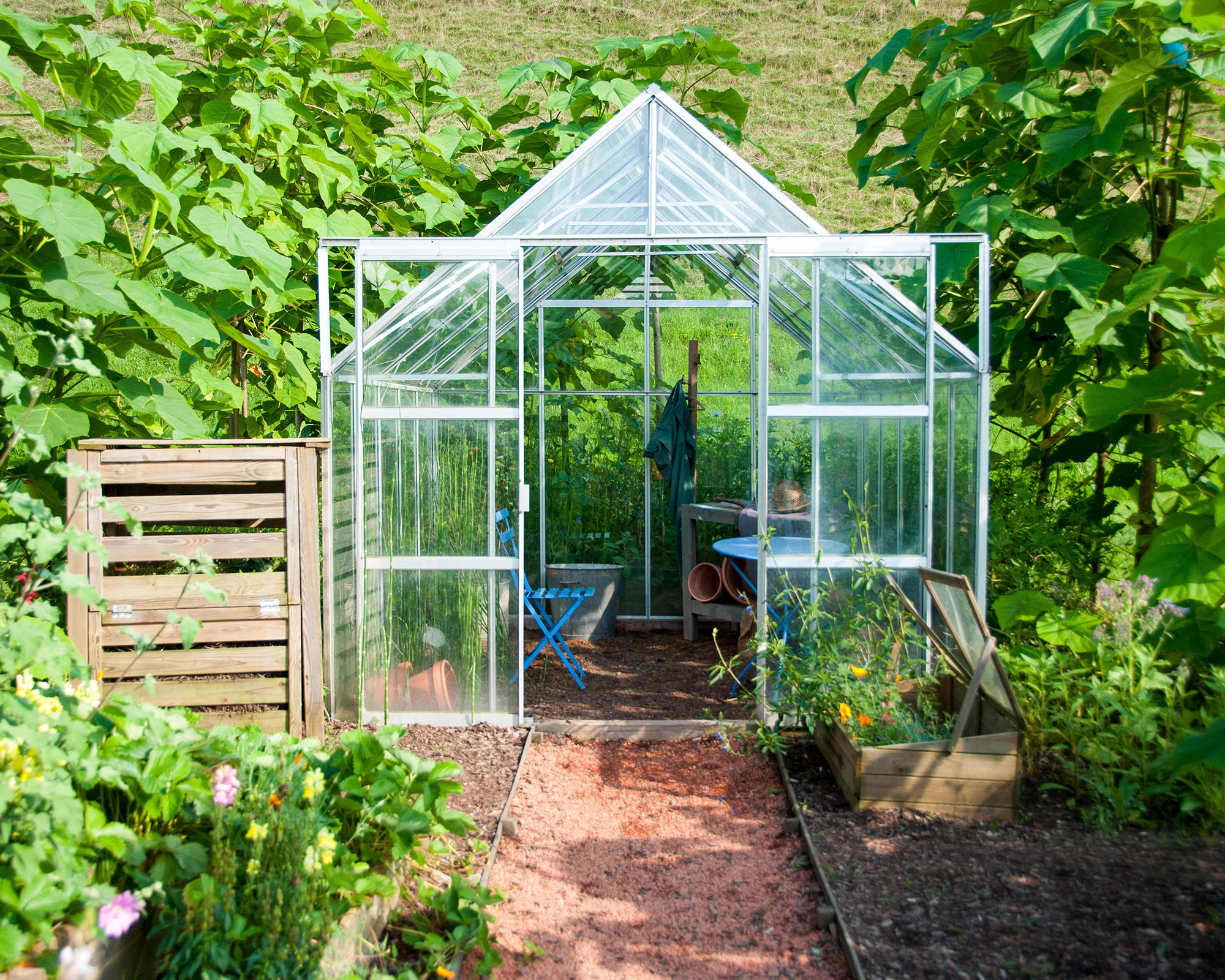
2. Keep plants warm and protected
Whether you learn how to heat a greenhouse or not is entirely dependent on what you want to grow. Each temperature offers a different range of planting options, so do bear this in mind:
- Unheated Without heat in a cold region, you can use a greenhouse to grow ornamentals that dislike winter wet (such as alpines and camellias), as well as many edibles (including salad leaves, spinach, tomatoes, peppers, and cucumbers). To expand your growing potential without spending too much, you might consider heating the greenhouse in spring and autumn only.
- Cool A year-round minimum of 45°F (7°C) is great for enjoying a huge range of edibles and ornamentals: scented plants such as freesia, hedychium, mimosa, and jasmine, as well as bougainvillea, succulents, citrus, and peach, and a wide variety of vegetables and salad.
- Warm Maintaining 55°F (13°C) or higher can be expensive in cold regions, but allows you to use a greenhouse as a lush, flowery glasshouse all year, with, for instance, bird of paradise (Strelitzia), gardenias, orchids, ferns, and palms. However, it is too hot for a lot of less exotic plants. At Parham House and Gardens in West Sussex, head gardener Andrew Humphris heats the greenhouses to a range of different temperatures. 'We keep the temperature in the main glasshouse at 60°F (15°C) in the winter,' he says. 'Whilst the other greenhouses are at 25-50°F (5-10°C) to keep the worst of the frost off.'
Another reason for keeping a greenhouse warm is that it’s pleasant to be in when you’re sowing and potting up during spring and autumn, and, of course, hot greenhouses are heaven in winter.
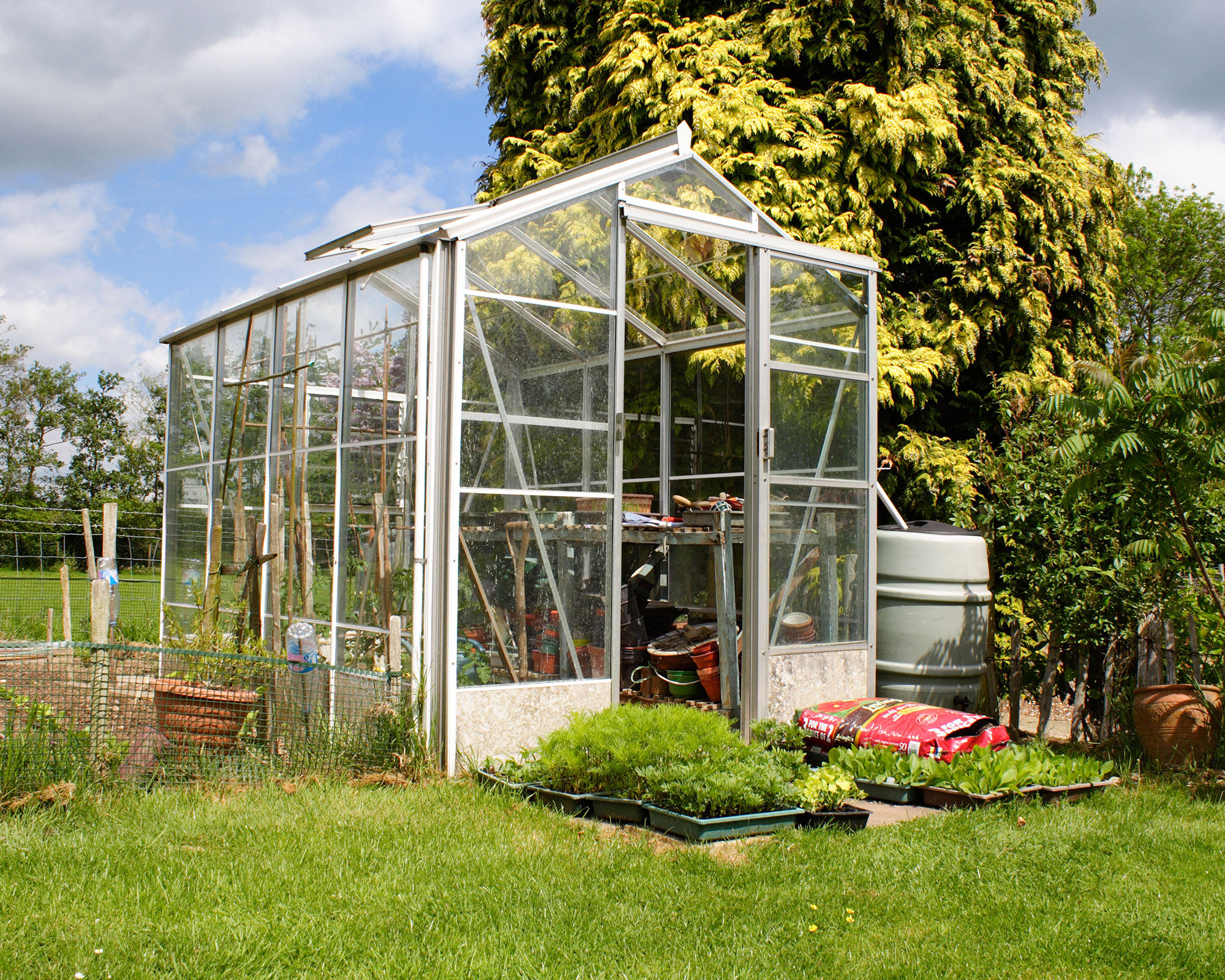
3. Remember the importance of air flow
When thinking about how to use a greenhouse effectively, having a decent air flow is important. It prevents extreme summer temperatures and excess humidity, both of which can damage plants. When required, open roof vents to allow hot air to escape and side vents to draw in fresh, cool air. When it’s very hot, leave the door open as well; but when it’s windy, never open vents on the windward side of the greenhouse. Extractor fans are an additional aid to be considered.
The same principles for providing adequate ventilation apply if you're using one of the best mini greenhouses too.
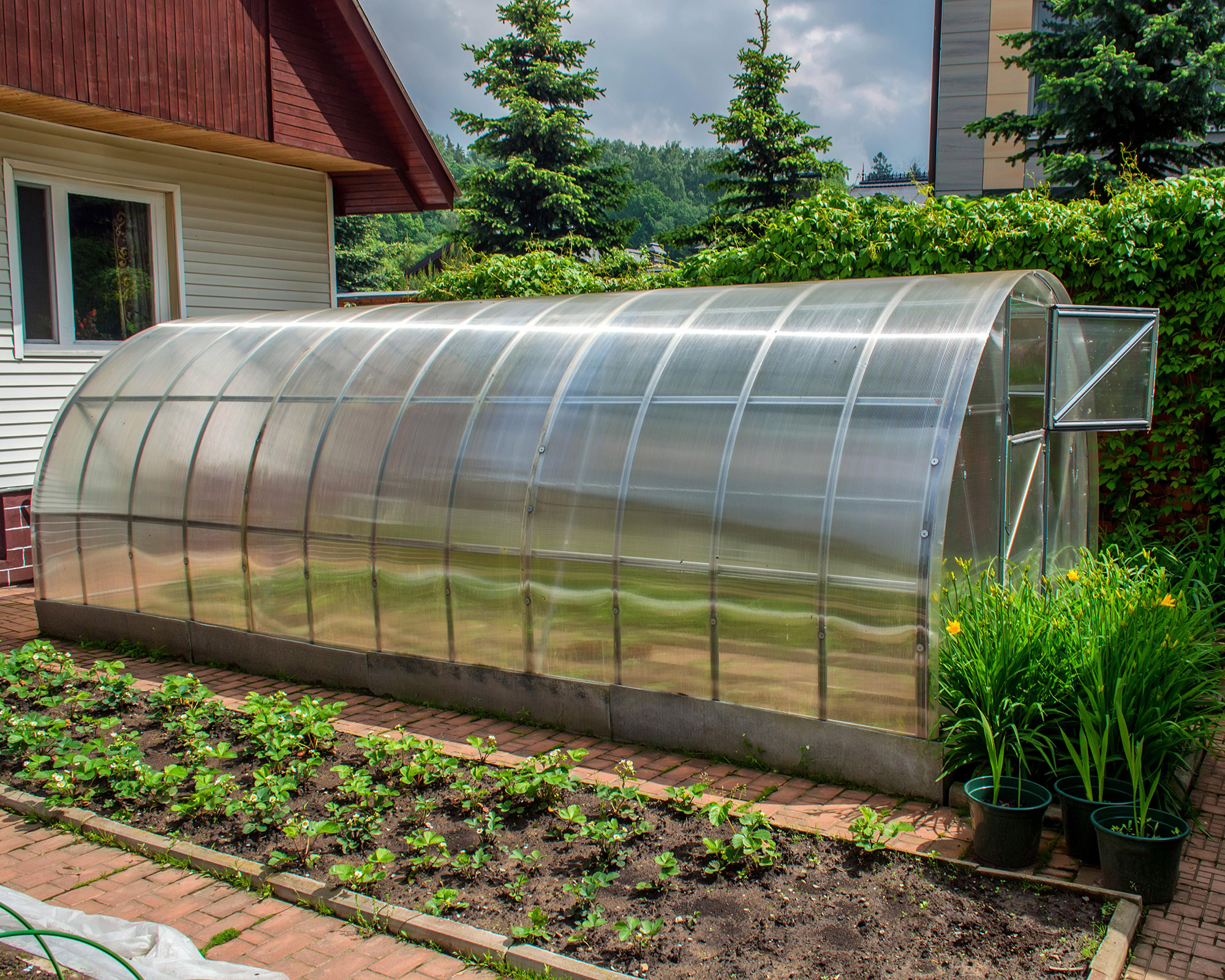
4. Create greenhouse shading for plants in summer
It's important to reduce the intense heat in your glasshouse as your greenhouse growing calendar changes throughout the year.
There are several ways of achieving this.
- Shade paints These are easy to apply to the exterior of the glass. They let light through and reduce temperatures and are washed off in the autumn. However, they are unattractive and can’t be removed on cooler or cloudy days.
- Exterior blinds These designs can be pulled down when the heat soars. They are very effective, can look great, and double up as winter insulation, but they aren’t always cheap and need to be adjusted according to the weather.
- Mesh netting This is fitted to the outside of the greenhouse. It is effective and cheap, but fiddly to erect and can’t be moved regularly.
- Interior blinds and netting Although these are an option, they are best avoided, as they don’t lower temperatures well and can get in the way of plants.
At Parham House and Gardens, head gardener Andrew Humphris uses cedar blinds specifically made for the main ornate greenhouse, and shade paint on the other glasshouses.
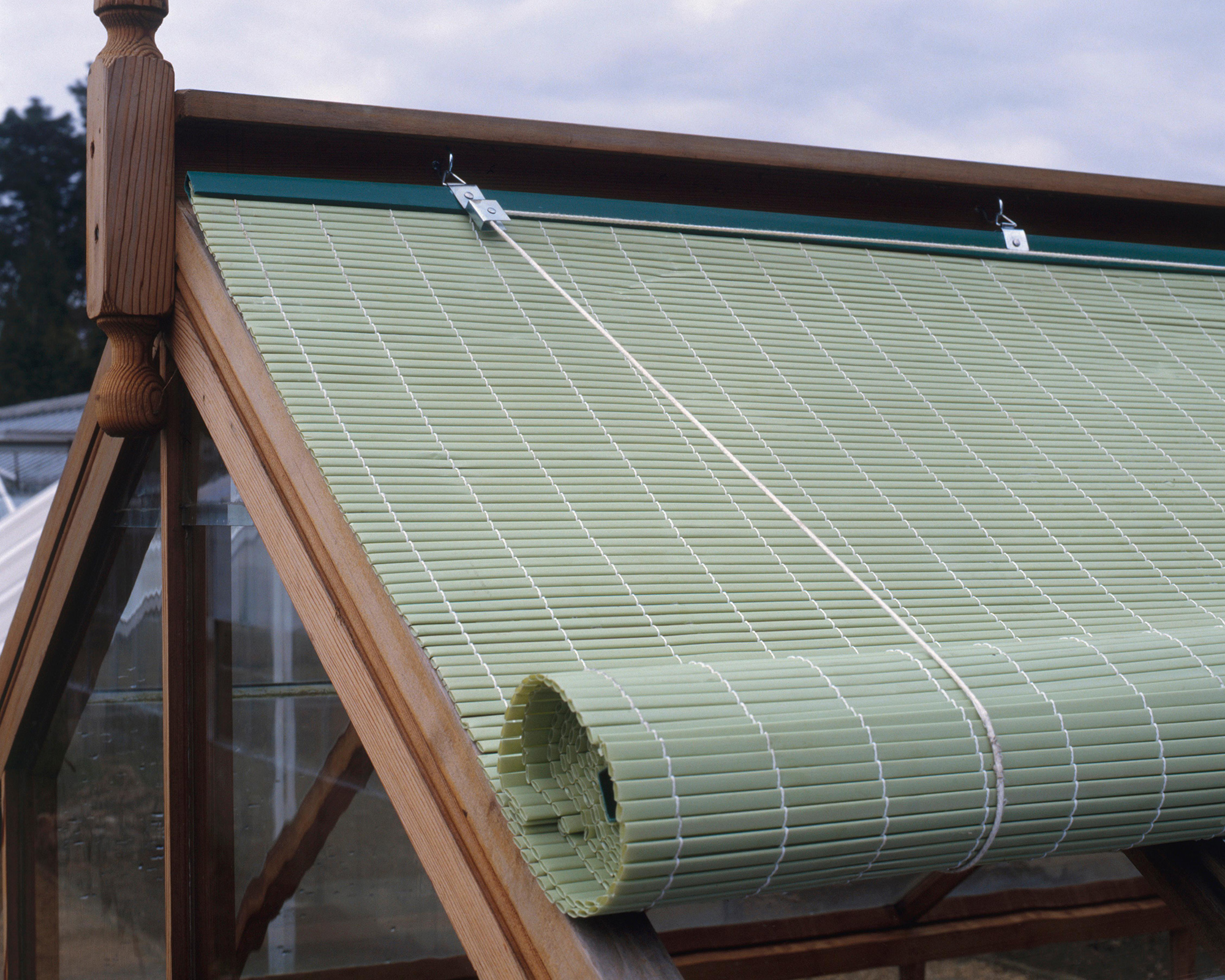
5. Control pest and diseases in your greenhouse
'In the greenhouse, pests and disease can be a big issue due to the warm, humid atmosphere,' says Parham's head gardener Andrew Humphris. 'Keeping your plants well fed, with the correct amount of watering is vital, as this will give you a strong, healthy plant, less prone to diseases. The other vital thing is to keep your glasshouse and plants clean and tidy.
'This includes picking over and removing damaged leaves and dying flowers, which would otherwise go moldy and attract further disease. At Parham, we use biological control, introducing predators for the most common pests throughout the summer, which is pretty effective.'
For example, parasitic wasps can be bought as a means for how to get rid of aphids, whitefly, and scale insects; and nematodes can be introduced for getting rid of slugs, vine weevils, mealy bugs, and ants.
Using pesticides or sticky insect traps is a bad idea as it kills the natural predators that eradicate the problem.

These tomato plants have been stripped of their lower leaves to encourage a better harvest
6. Choose the best method for watering your greenhouse plants
Watering plants by hand prevents parched and excessively wet plants. Morning is the best watering time, but it may need to be done more than once a day at the height of summer when greenhouse pots dry out in hours.
Having a range of greenhouse shelving ideas in your glasshouse increases the space that you can have for plants, but will naturally mean you spend more time watering.
Installing an outdoor tap in or near to the greenhouse is helpful, and a good garden water saving tip is to have a water butt that collects rainfall (though this shouldn’t be used for seedlings).
An automatic watering system is a good option, if you don’t have time to water or you go away a lot: for example, a trickle system with a timer.
Capillary matting from Amazon (dangled in a bucket of water) is great for laying under seedling trays or small pots. On scorching days, it’s wise to wet the path in the greenhouse to boost humidity.
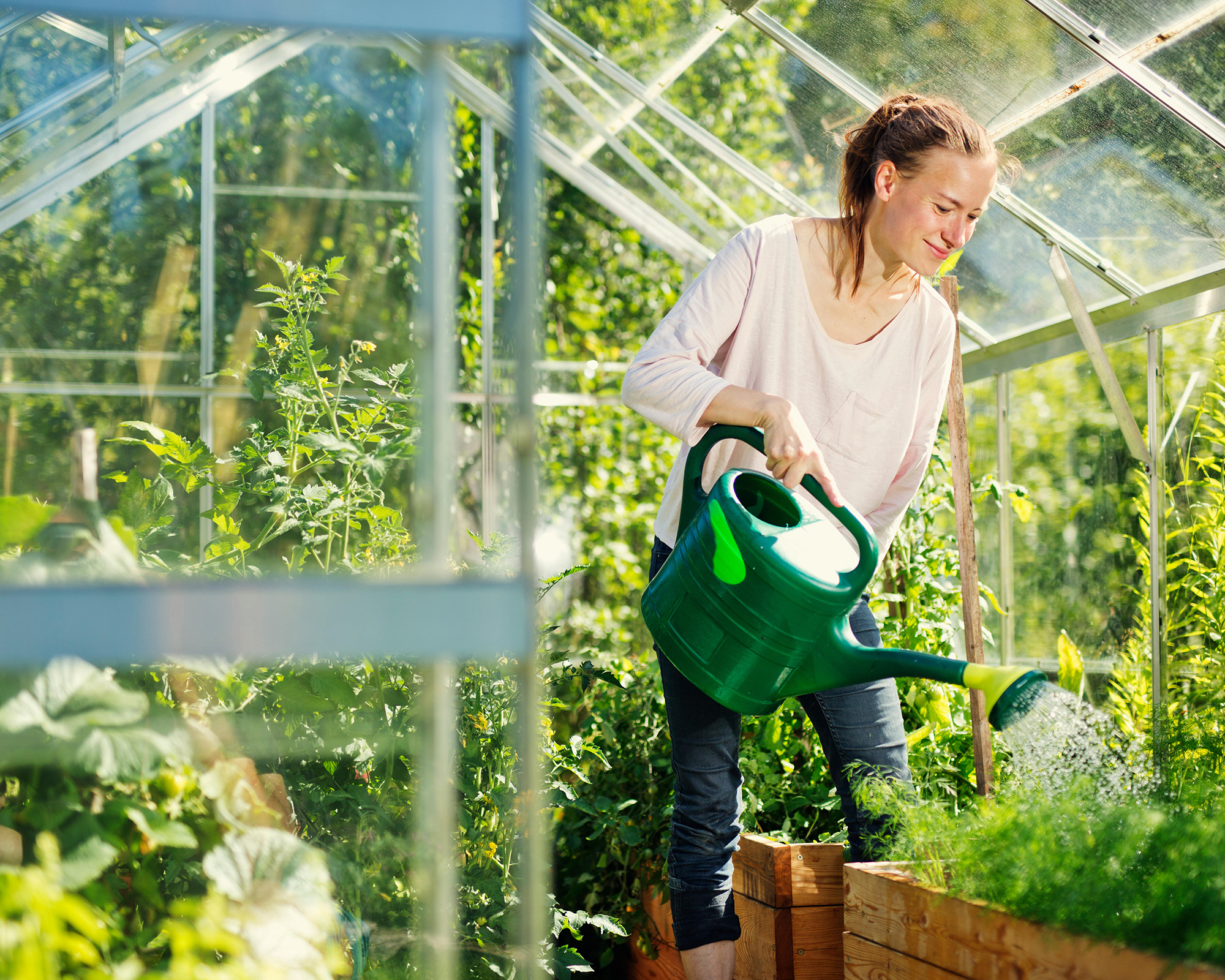

Teresa has worked as an Editor on a number of gardening magazines for three years now. So she is lucky enough to see and write about gardening across all sizes, budgets and abilities. She recently moved into her first home and the garden is a real project! Currently she is relishing planning her own design and planting schemes. What she is most passionate about when it comes to gardening are the positive effects it has on our mental health to grow and care for plants, as well as being great for the environment too and help provide food and shelter for wildlife.
